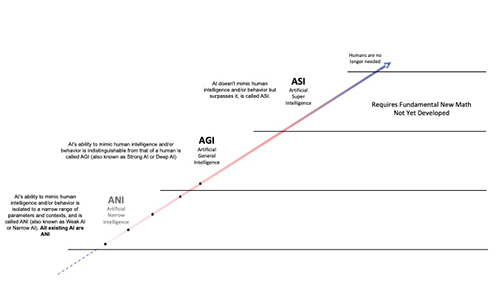Raising Artificial Intelligence
By: Mark Cummings, Ph.D., Joel Holland, William Yeack, CSE

Artificial Intelligence (AI) is currently experiencing a growth spurt. Just as when children go through growth spurts, it is helpful to be able to understand what is happening in the context of the overall development process. And, just like in a teenager, the growth spurt brings significant benefits but also limitations and dangers. Understanding this is key to being able to make the right decisions. So, if someone tells you that they have the ultimate AI that will solve all your problems, ask them the following questions: How do you fit in AI’s evolutionary path? What is the cycle time or bias for training relative to the cycle time of the underlying problem? How do you handle the data scale problem?
AI’s Evolutionary Path
One senior person in the field says that there is a new academic paper on AI published every minute. Considering that pace, there are many ways to look at AI’s evolution. In our research, we have found that this paper by Steve Sovolos is helpful in explaining the progression. As shown in Figure 1, there are three bands of AI evolution. The first band is Artificial Narrow Intelligence (ANI), or Band 1. It is the kind of artificial intelligence that is good at performing single tasks, such as playing chess or making predictions and suggestions. In the telco world, this kind of AI has been used to predict when certain types of equipment will fail. That allows operators to proactively replace equipment and avoid network interruptions. ANI is the only level of AI achieved so far. And, as we will see, it’s a level not yet fully attained, which shows how far we have yet to go.
Artificial General Intelligence (AGI) is the kind of artificial intelligence that can perform human-level intelligence functions and is Band 2. Artificial Super Intelligence (ASI) is the type that is smarter than the collective intellect of the smartest humans in every field. Smart as it is, however, it still needs human input of some kind in order to be deployed—and to work. ASI is Band 3. Anything beyond ASI is all speculative.

Figure 1 - AI Evolution Band
In addition, there was a Band 0, which was the precursor to all of these bands. Band 0 represents the Marvin Minsky–David Horowitz era, in which most of the foundation issues were discovered. This was the era of LISP and other approaches, which were revolutionary but by today’s standards seem elementary. The big growth spurt is what is getting us from Band 0 into the beginning of Band 1 (ANI). To understand this, as well as its promise and limitations, we have to break Band 1 down.



















